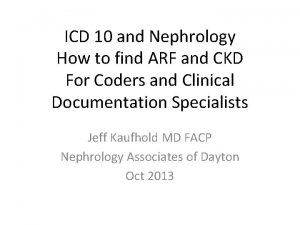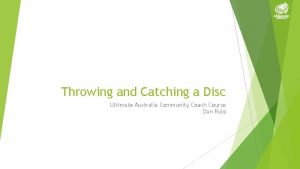Throwing and Catching Hearts Dr Lindsey Hampson Chartered








- Slides: 8

Throwing and Catching Hearts Dr. Lindsey Hampson Chartered Clinical Psychologist/Systemic Family Practitioner Sefton Specialist CAMHS Alder Hey Children’s NHS Foundation Trust With special thanks Lindsey. hampson@alderhey. nhs. uk

Aims To share a co-created metaphor to assist conversations linked to safety, emotional security and taking relational risks in and outside of therapy. Make theory-practice links Video clips of metaphor in action with family’s permission. Discuss possible extensions of the metaphor to assist a variety of process interactions.


Systemic Theory Attachment Narrative Therapy (Dallos & Vetere, 2008) Offers a 4 stage framework 1. Creating a safe base 2. Exploring narratives and attachment experiences within a systemic framework 3. Considering alternatives and taking action (Relational risk taking, subjugated narratives of vulnerabilities or unmet needs. Enactments a feature of the work) 4. The Future and maintaining therapeutic base

Attachment Based Family Therapy (Diamond, Diamond and Levy, 2014) Adolescent security depends on parents being available and responsive This felt security is affected by Big Ts and Little Ts (t=trauma) Ruptures in being able to go to parent for help and support-do not trust that the parents will be there for them. Adolescent needs to feel that they can turn to parent/carer for love and support with any problems they might have. Treatment according to ABFT involves identifying relational traumas and engaging in attachment tasks to help young person express unmet needs and parents to listen and support in a different way. ABFT helps the adolescent verbalise unmet need in a way that the parents can listen to (the throw? ) and coaches the parents to listen and respond in a different, more secure way. (the catch? )

Throwing your heart: possibilities for discussion that the metaphor creates You need to throw it in a way that people can catch it. If you throw it too fast and aggressively, people turn away and your heart drops. If you throw too subtlety, people miss the throw-falls short and they are not ready People need to be ready to catch it. You need to know they are ready and won’t drop it! You need to be able to throw it to them, not away, and that you get it in range. If you have become so used to keeping feelings on the inside, how do you get started throwing? You need to recognise it’s been caught in order to know this was a risk worth taking.

Using the metaphor Starting off from a process observation can be helpful Inside feelings get stuck on the inside (rupture) because of contextual factors. They overflow-come out in puzzling ways. Trying to cope on own People can’t help-they don’t know what the inside feelings are. They get confused, stressed or frustrated by the ‘overflow’. Inside feelings need to get on the outside-sharing what’s in your heart Those feelings once on the outside need to be ‘caught’ and held by another. Throwing someone your heart-relational risk-how will they be able to tell they won’t drop it? What will they need to see that will tell them this was a risk worth taking? (repair) Concrete: the heart shaped box

Summary The throwing and catching heart metaphor gives an easily understandable way to explain and intervene in emotional security. It gives the potential for coherent narratives to be constructed about how feelings got stuck on the inside and allows family members to make sense of their experience. It is informed by ABFT and ANT The concrete task gives rise to taking relational risks. Please do let me know if it turns out helpful to other families and I can feedback to.















